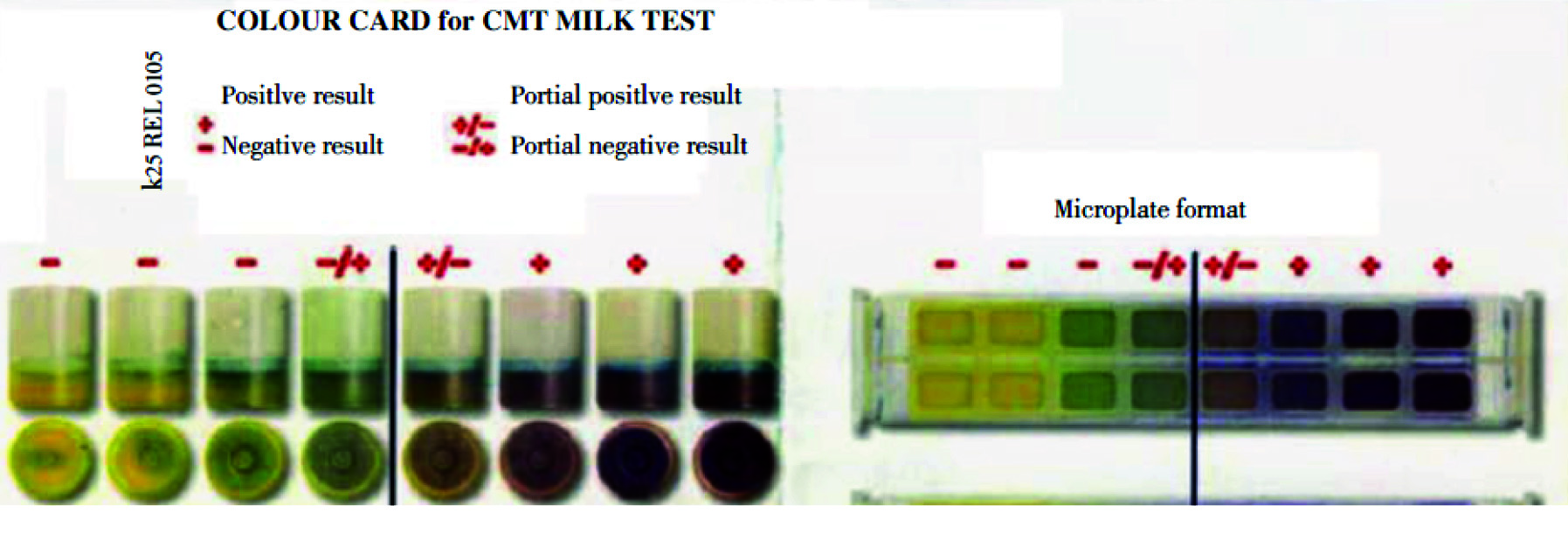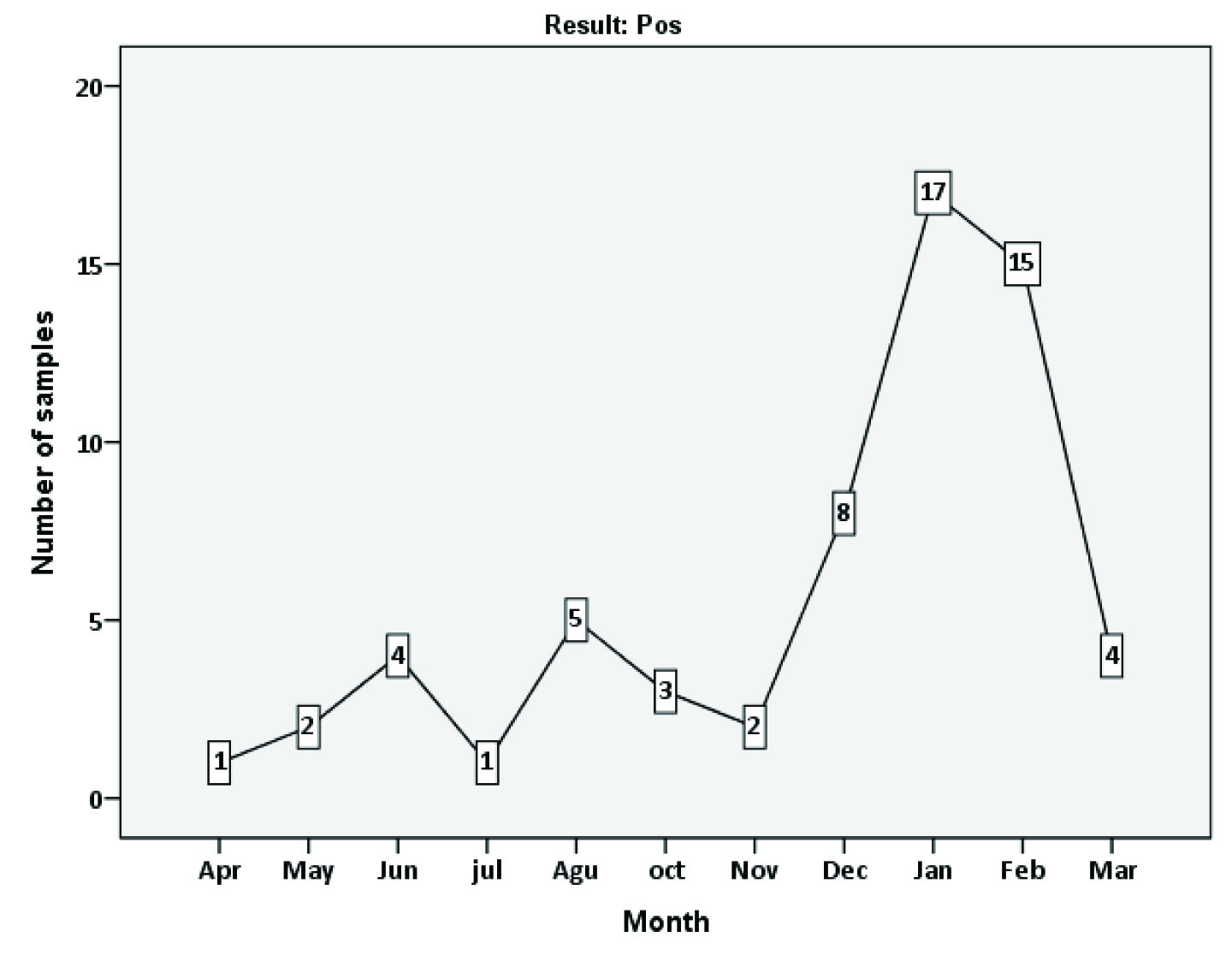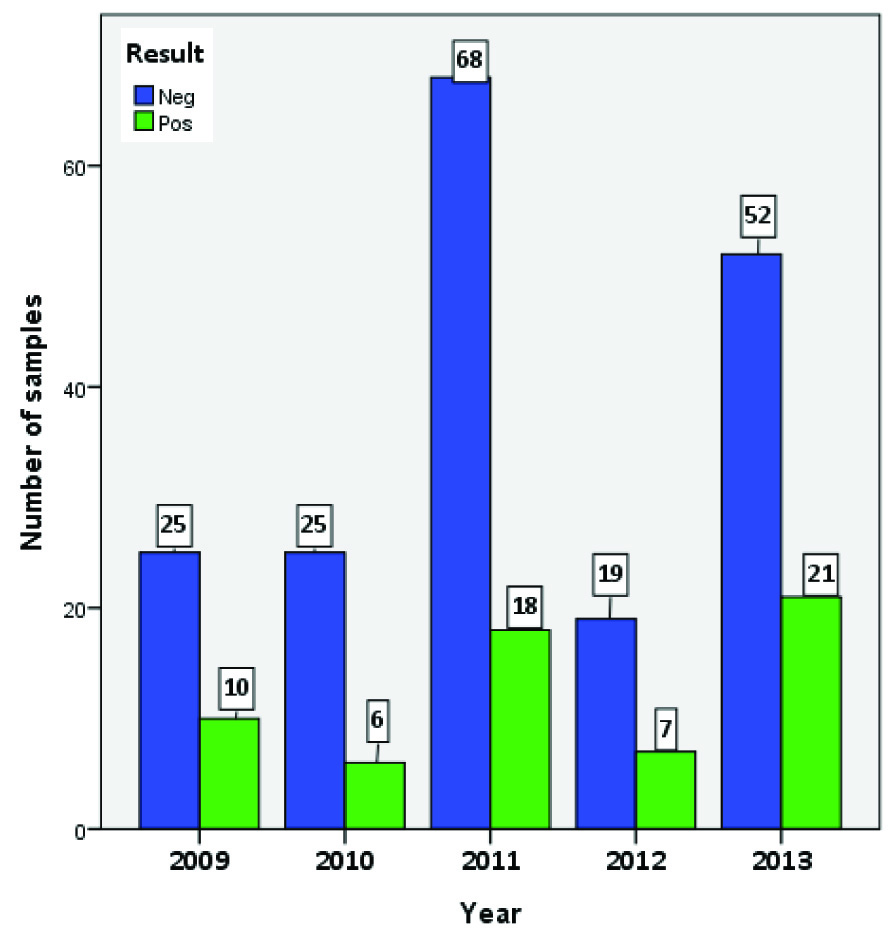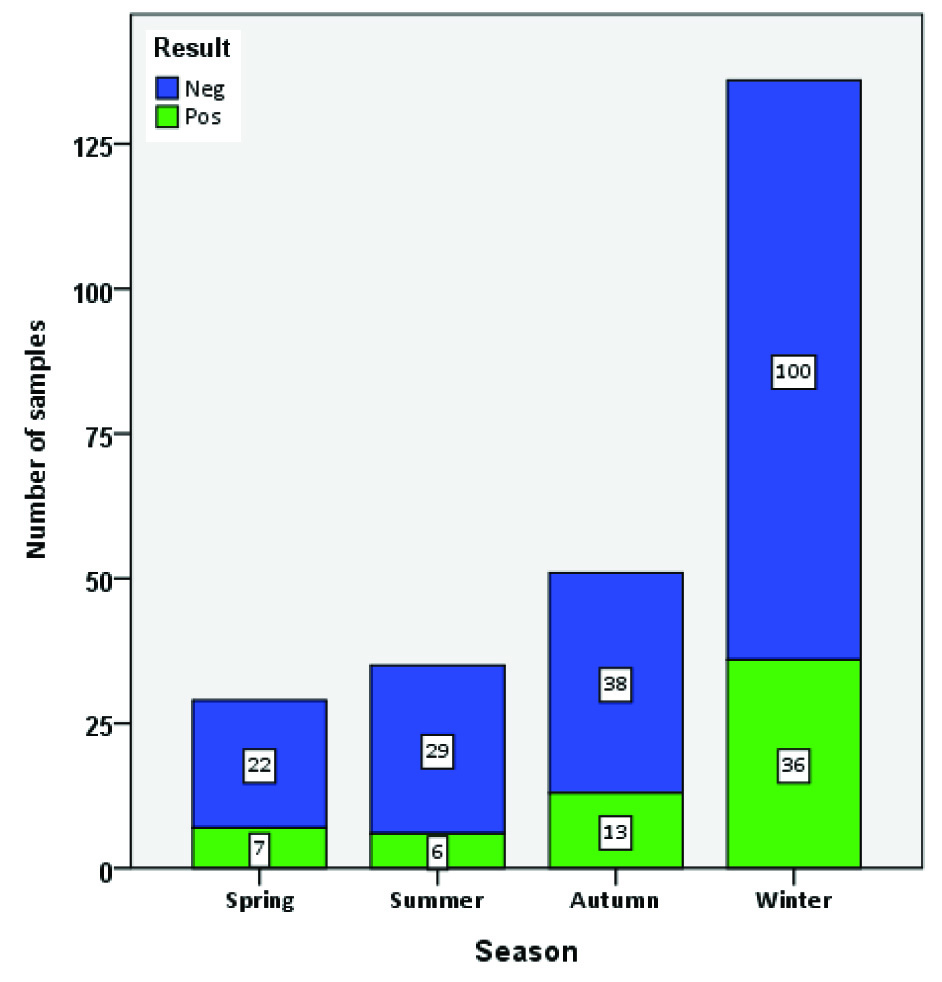Antibiotics are used widely in animal husbandry for treating the diseases related to bacterial infections [1,2]. Antimicrobial drugs have been used extensively for decades in industry. They are commonly are used in livestock facilities to treat mastitis [3,4]. Annually around the world, about 12 million kg of antibiotics are used in the livestock industry, out of which only about 9 million kg are used to treat infectious diseases and the rest are used either to prevent or increase the animal growth [5].
According to statistics, 806 tons of antibiotics were used in animal husbandry and poultry in Iran in 2011, of which 66.4% were used in the livestock industry [6]. The presence of antibiotic residues in milk is a public health problem which can lead to allergic reactions in sensitive individuals and has negative effects on the human gut flora composition [3]. It has also been reported that tetracycline residues, in the long run, cause digestive disorders, the destruction of the liver, yellowing of the teeth and the tooth hyperplasia [7].
Antibiotic residues and veterinary drugs can trigger cancer, mutagenicity and toxicity in humans [8]. Further, the frequent use of antibiotics can increase the biological drug resistance [1,3]. Besides, antibiotic residues in animal products will cause environmental pollution and water pollution [9]. In most countries of the world, for the remainder of antimicrobial drugs in milk, some criteria have been set [1].
Due to the harmful effects of veterinary drugs for humans, the Food and Drug Administration System in Iran enacts laws to control the use of antibiotics. Milk production in Iran is about 7 million tons and the consumption of edible milk per capita has reached to 4.82kg in recent years [5]. Currently, both raw and pasteurized milk should be free of microbial growth inhibitor according to Iran’s internal standards set by the Iranian Food and Drug Administration System; however, a threshold for the remaining antimicrobials has not been set exclusively [10,11].
Due to the harmful effects of residual antimicrobial drugs in food especially in domestic animals’ milk which is consumed with breakfast by many people, particularly by school children in Iran, quality control regarding the antibiotic residue in milk is essential. This study was designed to determine the level of antibiotic residues in milk and increase monitoring of producers of dairy products through systematic planning so that the health of milk consumers, who are mainly school students, could be protected.
Materials and Methods
This study is a cross-sectional one; the sampling was performed according to the standard procedures set by the Institute of Standards and Industrial Research of Iran-2836. Random cluster sampling method was used, and the sample size, based on prior studies [12], was calculated for every year by the following formula:

p = 21%, 1-p = %20, d = 0.06, Z = 1.96, n = 45
Total 251 samples of commercial pasteurized milk packet distributed in schools (code A), raw milk collection centers in Gonabad city (code B) and pasteurized milk production factories (code C) in Gonabad city were included in the study. The samples were collected in 2009-2013 years, and once a month, 200 micro liters of milk were collected randomly in sterile containers on which the product specifications were listed. The samples were divided into three groups, for which the brand name of the products were not mentioned to observe the ethical considerations. The milk samples were transferred to the laboratory at Food and Drug Administration Deputy. The Copan test kit of Denmark Christian Hansen Company was utilised to detect the presence of antibiotic residues in milk samples. Copan test, is a quick, particular, and applicable method, which is useful in regulatory and production centers for food products and is used to indicate the presence of the antibiotics by inhibiting microbial growth [13].
Aliquots of 100μL of milk samples were poured into the kit containing Bacillus stearothermophilus var. calidolactis using a micro-pipette, the kits were incubated at 64.5°C and the results were recorded after 3 hours. The residues of microbial growth were identified in the absence of antibiotics. During growth, the microorganism uses nutrients, ferments lactose and produces lactic acid which results in a change in the colour of the compound bromocresol from purpule to yellow.
On the contrary, if the antibiotic residues exist, Bacillus stearothermophilus var. calidolactis unable to grow and the purple colour of the medium remains unchanged. The colour of suspected samples would be between purple and yellowish colour; hence, determining the presence of antibiotics type in these samples was not conclusive. The kit reading guide is specified in [Table/Fig-1] [13].
Copan Kit reading guide (Forouzan, 2014) [13].

Statistical Analysis
Statistical analysis was carried out using Chi-square and one-way ANOVA to determine if there were any significant differences among the groups with SPSS software V.20. The significant level was considered at p<0.05.
Results
In general, 251 milk samples were collected, of which 143 (57%) were coded as A, 84 (33.5%) coded as B, and 24 (9.6%) coded as C. Of these, 189 samples (75.2%) were negative and 62 others (24.8%) were positive. From the three types of milk samples, 41 samples (28.7%) of the code A, 18 samples (21.4%) of the code B, and 3 samples (12.5%) of the code C were positive.
In addition, there was no significant difference among the three types of contaminated milk with regard to the year and month (p=0.164 and p=0.917, respectively) [Table/Fig-2]. Totally, from the milk samples most contaminated with antibiotics, 17/62 (27.4%) samples were positive in January, and regarding code A, 13 samples were positive in the same month [Table/Fig-3].
Comparison of the positive samples in percent in the years (2009-13).
| Code sample | %Frequency | % Positive samples in year | p-value |
|---|
| 2009 | 2010 | 2011 | 2012 | 2013 |
|---|
| A | 57 | 17.1 | 7.3 | 26.8 | 14.6 | 34.1 | 0.365 |
| B | 33.5 | 11.1 | 11.1 | 33.3 | 5.6 | 38.9 | 0.932 |
| C | 9.6 | 33.3 | 33.3 | 33.3 | 0 | 0 | 0.770 |
The frequency of positive milk samples per month- year (2009-13).

There was not a significant difference among the three types of milk (p>0.05). The highest number of milk samples (n=7) contaminated with antibiotics were related to code B (38.5%). During winter, the highest number of positive milk samples belonged to code A and B, 27 (65.9%) and 8 (44.5%) samples, respectively [Table/Fig-4].
Comparison of the percentage of positive milk samples collected in season and month.
| Variable | % Positive samples |
|---|
| A | p-value | B | p-value | C | p-value |
|---|
| Season | Spring | 7.3 | 0.628 | 16.6 | 0.725 | 33.3 | 0.311 |
| Summer | 7.3 | 16.6 | 0 |
| Autumn | 19.5 | 22.3 | 33.3 |
| Winter | 65.9 | 44.5 | 33.4 |
| Month | Apr | 2.4 | 0.736 | 0 | 0.673 | 0 | 0.676 |
| May | 2.4 | 5.5 | 33.4 |
| Jun | 2.4 | 11.1 | 0 |
| Jul | 2.4 | 0 | 0 |
| Aug | 4.8 | 16.6 | 0 |
| Oct | 0 | 0 | 0 |
| Sep | 0 | 5.5 | 0 |
| Nov | 4.8 | 5.5 | 33.3 |
| Dec | 0 | 11.1 | 0 |
| Jan | 31.7 | 16.6 | 33.3 |
| Feb | 14.6 | 16.6 | 0 |
| Mar | 29.2 | 11.1 | 0 |
Considered as a whole, the highest number of milk samples contaminated with antibiotics were in the year 2013 (n=21 samples, 33.8%). The proportion of positive samples to the whole samples in the years (2009, 2010, 2011, 2012 and 2013) were 10 (28.7%), 6 (26.9%), 18 (20.9%), 7 (19.3%) and 21 (28.5%), respectively [Table/Fig-5].
The frequency of positive and negative samples of milk per year.
Neg - Negative
Pos – Positive

The proportion of positive milk samples regarding the entire sample in the different seasons of the year were 36 (26.4%), 13 (25.4%), 7 (24.1%) and 6 (17.1%) in winter, autumn, spring, and summer, respectively [Table/Fig-6].
The frequency of positive and negative milk samples according to season.
Neg - Negative
Pos - Positive

Discussion
Milk is a perfect food, which provides the bulk of the daily requirements for humans of all ages, especially children. On the other hand, not only milk is a good source for the growth of microorganisms but it is also a source of food poisoning for health, so its importance is quite clear [14]. According to international standards, the presence of antibiotics in both milk and milk products is not acceptable because consumers may already have allergic reactions and gastrointestinal problems. Upon consumption by livestock, almost all antibiotics appear in the raw milk in shortest period of time. The presence of antibiotics in milk can upset the process of dairy production. Therefore, the presence of antibiotics in the raw milk should be controlled by the factories producing pasteurized milk.
The results of this study showed that over five years, 23% of pasteurized milk samples in Gonabad city were positive regarding antibiotics. Between the months of the year in terms of milk samples contaminated with antibiotics, there was no significant difference; hence, it seems that climate change has no impact on the results. The milk coded as A, that is, the one included the milk distributed in schools, had the highest contamination that is not enjoyable for students and makes them refrain from consuming milk. On the whole, there was no significant difference among samples over the years in terms of contamination of milk with antibiotics, a finding which indicates that there is not enough control over the use of antibiotics in veterinary medicine. In other words, the degree of consuming antibiotics was expected to be low with the course of time; however, it was not observed in our studied results.
The literature shows that most of the research has investigated the raw milk in addition to the pasteurized one. Furthermore, in the previous studies, mostly, the sampling method has been different from the one in our study and the milk consumed by the school children has not been investigated. The results of the present study are in some cases similar to those of other studies and in some other cases the percent of positive samples has been low [15]. In what follows, some of these studies are mentioned. The results of our study were compared with those of other studies in Iran [Table/Fig-7] [16-21].
Comparison of the results of our study with those of other studies in Iran [16-21].
| Researcher | Reference number | Year | Sample type | Test | Milk contamination (%) | Compared with our study |
|---|
| Present | - | 2009-2013 | 251 Samples of raw and pasteurized milk in Gonabad city | Copan | 28.7% of schools, 21.4% of collection centers, 12.5% of factories | - |
| Mahmoudi | [16] | 2012 | 200 samples of raw milk dairies in the outskirts of the Tabriz city | Delvo test | 57.5% | Different method and results |
| Mahmoudi | [17] | 2011 | Samples of raw and pasteurized milk in Ilam Province | Copan | 29.1% of milk in collection centers and 22.2% of pasteurized milk | Antibiotic residues of milk was higher in summer than that of the spring (similar to our study) |
| Manafi | [18] | 2008 | Raw and pasteurized milk East Azerbaijan Province | Delvo test | 26% of industrial dairies, 16% of collection centers, and 30% of pasteurized milk | In our study, the percentage of contaminated milk samples was more than that of this study |
| Bahreinipur | [19] | 2008 | 200 samples of raw and pasteurized milk collected in Mashhad city | Microbial inhibition test | 30% | Different method and results |
| Ghanavi | [20] | 2003 | Milk samples collected in Iran | Different methods | 27% of raw and 5% of pasteurized milk | Different method and results |
| Abedini | [21] | 1973 | 800 samples of raw and pasteurized milk in Shiraz city | Disc method | 2.7% | The samples were collected in 8 months (in our study during 12 months) |
Lee Burton et al., reported that the two tests of Delvo and Copan can detect milk contamination to Penicillin, Cloxacillin Sodium, Sulfamethazine, Cephalexin and Gentamycin based on the standards set by the European Union. These two tests are simple, low-error, and are complementary for the needs of the European Union [22]. In the study Kangth et al., in Kenya, it was shown that 16% of milk samples contained antibiotics residues [7].
Bylandzic et al., reported that, in 1259 samples of raw milk in Croatia, 37 cases of residual antibiotics was diagnosed [23], nevertheless, the raw milk was not examined in this study.
The results obtained in a study by Mahmoudi et al., also, indicated that significant contamination with antibiotic residues in pasteurized milk samples was observed, that is, 22.2% of the samples were positive in terms of contamination [12]. In another study in Iran, from a total of 848 milk samples, 30% cases were eligible for antibiotic residues.
Movassegh (2012) tested 50 samples of raw cow milk in the Ilkhchi region in Tabriz using Copan test and observed that 5 samples (10%) contained antibiotic residues [8]. Rasouli et al., reviewed the status of antibacterial drugs on dairies in Tehran and reported that among 24 anti-bacterial products, Tetracycline, Penicillin, and Streptomycin, respectively, had the highest frequency of use. Most of these husbandry centers do not follow the right procedure and time for treatment with antibiotics and the proper time interval for consumption or prohibition of both milk products and meat [24,25].
The results of Fallahrad et al., conducted on 68 milk samples, pointed out that 11.76% of the total samples of the raw and pasteurized milk collected in Mashhad city were contaminated with Gentamycin [26]. In a study by Dabbagh Moghaddam et al., (2014), which was performed on 56 samples of pasteurized milk distributed in Tehran, the researchers reported the presence of antibiotics in 33.9% of the sample, of which 26.3% of the samples were contaminated with Tetracycline and 7.6% of the samples contained other antibiotics [27]. Sadeghi et al., reported that, from a total of 100 samples of raw milk taken from the milk tankers in Garmsar, 19% of the samples were contaminated with residues of antibiotics [28]. The results of the study carried out by Mohammadi Sani et al., showed that 40.8% of pasteurized milk samples, which were tested with Copan test, were positive [29]. In Yamaky’s study which was performed on 2686 samples of raw sheep’s milk in Spain, only 7.1% of the samples were found to contain residues of antibiotics [30].
The results of the above studies conducted in Iran shows that, at present, antimicrobial residues in milk production is high and the results of our study confirm these findings. Therefore, the prevalence of antibiotic residues in raw and pasteurized milk production in Iran is striking and disturbing.
The results of studies in other countries, especially European countries indicate that controlling and monitoring milk production in these countries are more serious, and the dosage and timing of the antibiotics are observed more precisely. Given that milk a complete food and that the nutritionists insist that it should be used every day by people of all ages, especially children, the pasteurized milk is distributed free of charge in Iranian schools. However, the control of antimicrobial residues in milk is an important and necessary issue.
Currently, manufacturers of dairy products usually use high quality milk for the production of other milk products because the antimicrobial residues can inhibit the growth of starters or the useful bacteria needed for producing those products [31].
Limitation
One limitation of this study was that there were some undiagnosed antibiotics which were not specified in livestock products due to lack of access to appropriate diagnostic tests. Also, another limitation was that we did not include unpasteurized raw milk in our sample as it was not available and the milk production centers were so dispersed.
Conclusion
Finding of above study noted that the production of contaminated pasteurized milk in Gonabad city is above the standard level, which is due to the high use of antibiotics in livestock. There is not sufficient and necessary control over the milk factories and milk collection centers in determining the remaining antibiotics during delivery of milk. On the other hand, poor livestock management, low supervision over the livestock and husbandries, non-compliance with sanitary conditions, and inadequate physical space can cause the animals to get diseases, for the treatment of which the farmers have no choice other than taking antibiotics.
Thus, providing necessary training for farmers and ranchers of livestock, supervising and controlling the construction of physical space for livestock by the relevant organizations, and also preventing the delivery of contaminated milk to the factories for milk products would be very effective in reducing antimicrobial residues in pasteurized milk. Moreover, control and detection of antibiotics in food and other products of animal origin (meat, poultry, fish, eggs, etc.), can also be done to protect the health of consumers. It is recommended that the right residue of any kind of antibiotics in Iran’s internal standards be set similar to respective standards of the European Union.